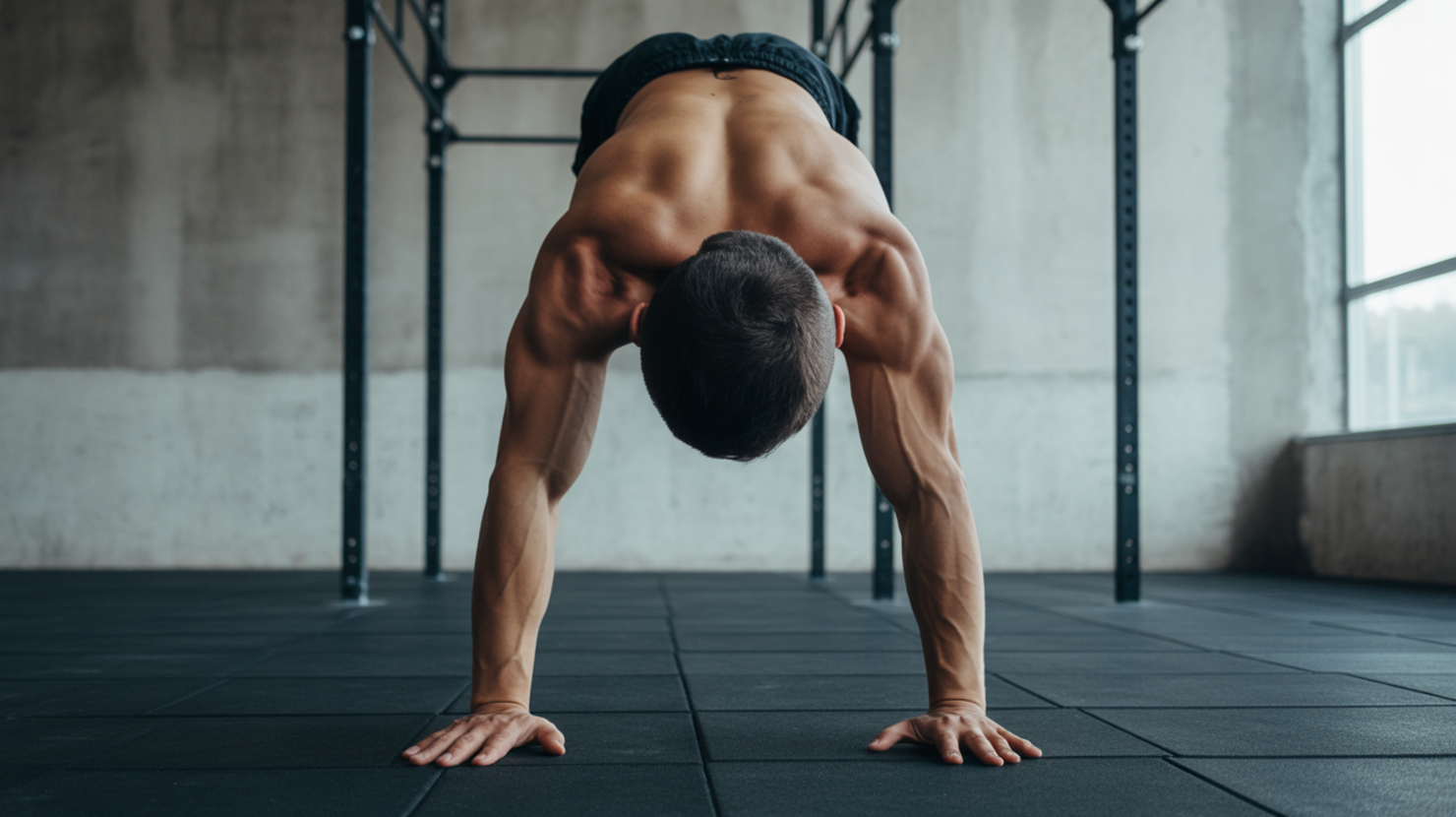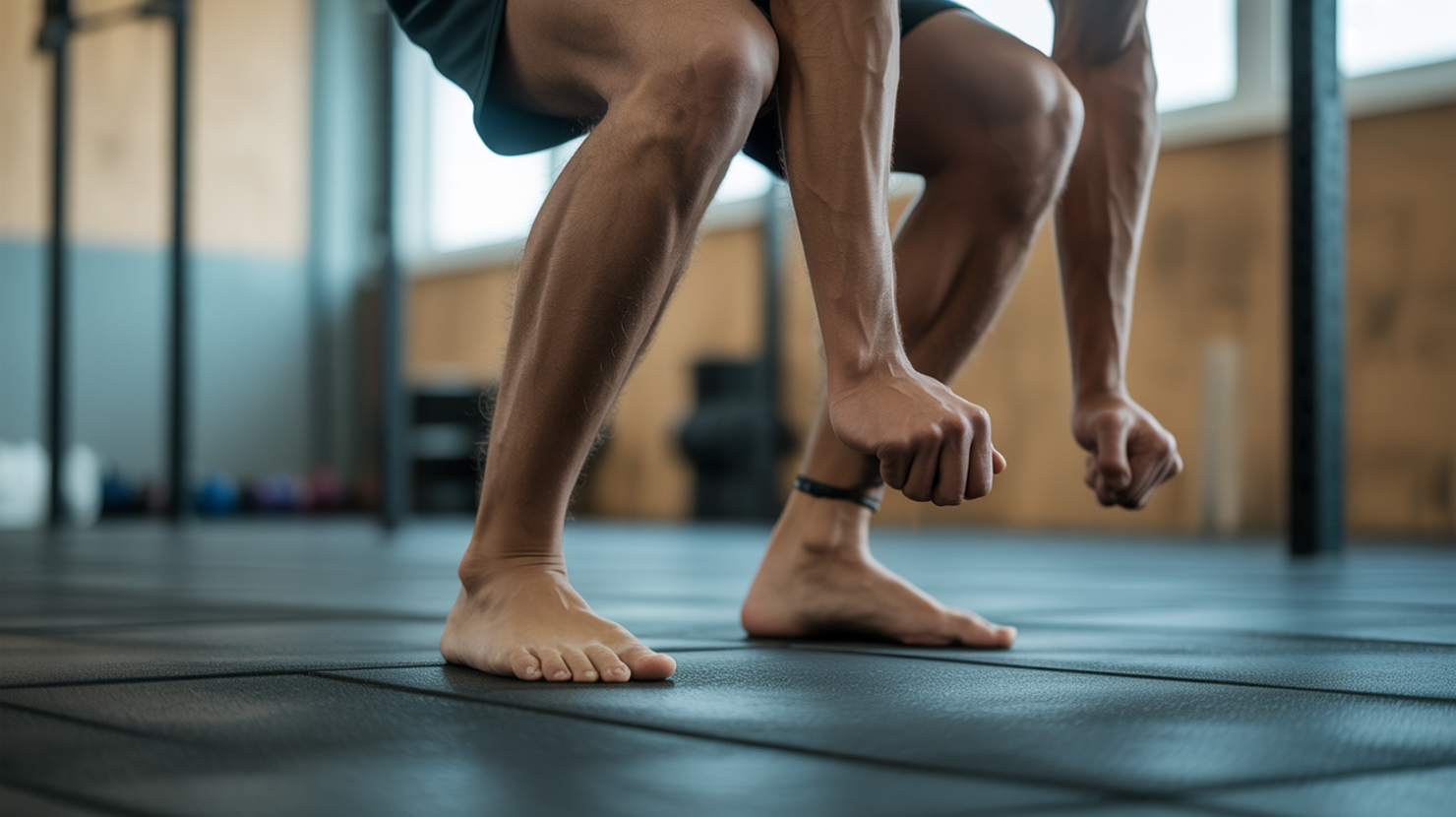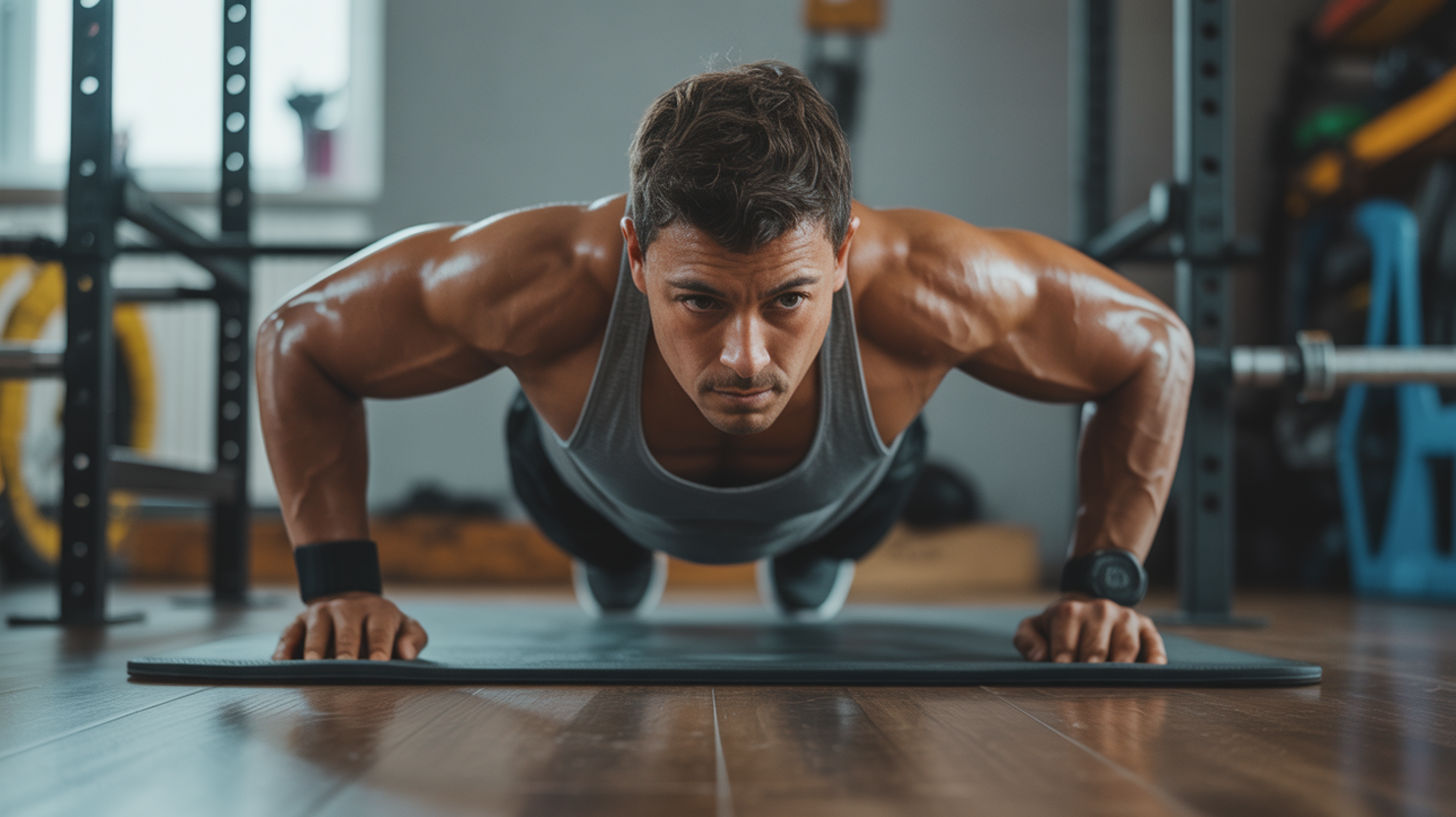“`html
The Science Behind Diaphragmatic Breathing Efficiency
Many advanced bodyweight skills demand incredible strength, control, and endurance. While you meticulously train your muscles, optimizing your breathing is often overlooked, yet it’s a fundamental pillar. Understanding the science behind efficient diaphragmatic breathing is crucial for unlocking your full potential. The diaphragm, your primary respiratory muscle, doesn’t just manage airflow; it’s intricately linked to your core stability. When activated correctly, it helps create intra-abdominal pressure, acting like an internal brace. This enhanced core support is vital for maintaining rigid bodylines in skills like planches, levers, and handstands, preventing energy leaks and reducing injury risk.
Efficient oxygen utilization is another critical component directly influenced by proper breathing mechanics. Your muscles rely on a consistent supply of oxygen to perform work, especially during sustained efforts common in bodyweight training. Shallow, chest-dominant breathing leads to less efficient gas exchange, potentially limiting the oxygen delivered to your working muscles. Conversely, deep, diaphragmatic breaths maximize lung capacity and oxygen uptake, improving muscular endurance and delaying the onset of fatigue. This allows you to hold challenging positions longer, perform more repetitions, or sustain tension through complex sequences.
Beyond the physical benefits, synchronized breath patterns offer significant neural benefits. The act of controlled, rhythmic breathing has a profound effect on the autonomic nervous system, shifting you towards a more parasympathetic state. This can reduce anxiety and improve focus, which is essential when attempting demanding skills that require high levels of concentration and proprioception. Integrating breath timing with movement fosters better motor control and body awareness, creating a smoother, more efficient execution of techniques. Learning to consciously control your breath allows you to manage tension effectively – exhaling to release unnecessary stiffness and inhaling to prepare for stability, ultimately enhancing both performance and mental resilience.
Common Breathing Pitfalls in Advanced Calisthenics
Mastering advanced bodyweight skills isn’t just about raw strength; it’s deeply intertwined with how effectively you manage your breath. As you progress to more demanding exercises like the planche, front lever, or dynamic movements like muscle-ups, common breathing errors can significantly hinder your performance, stability, and endurance. Identifying and correcting these pitfalls is a crucial step towards achieving your full potential.
One major pitfall is the over-reliance on chest breathing, especially during moments requiring high tension. When under stress, many athletes default to shallow, upper-chest breaths instead of engaging the diaphragm. This limits the oxygen intake needed by working muscles and fails to provide the deep core stability that diaphragmatic breathing offers. For complex static holds, where absolute rigidity is key, this shallow breathing can leave your core unsupported, leading to energy leaks and decreased hold time. Focusing on initiating breath from the belly is essential.
Another common issue is breath-holding tendencies in isometric holds. It feels intuitive to lock everything down, including your breath, when fighting for those precious seconds in a front lever or handstand. However, holding your breath restricts blood flow, spikes internal pressure unsafely, and starves your muscles and brain of oxygen. This can lead to shaking, premature failure, and even dizziness upon release. Learning to maintain controlled, consistent breathing throughout a hold, even if shallow, is vital for endurance and safety.
Finally, many athletes suffer from mistimed exhales during explosive movements. Whether it’s the pull phase of a muscle-up, the push phase of a dynamic handstand push-up, or the jump in a plyometric exercise, failing to synchronize your exhale with the concentric part of the movement reduces power output and efficiency. The exhale helps to brace the core and facilitate force generation. Exhaling forcefully as you push or pull through the most challenging part of the movement can dramatically improve performance.
Correcting these fundamental breathing errors is as important as perfecting your physical form. By becoming aware of these common traps and actively training your breathing patterns, you can unlock greater stability, endurance, and power in your advanced calisthenics journey. You can learn more about the mechanics of respiration and exercise performance from resources like articles found on reputable sports science websites or academic journals, such as those potentially available through a search on sites like PubMed focusing on respiratory mechanics in exercise.
Foundational Diaphragmatic Activation Protocols
Before diving into complex breath-movement synchronization for advanced bodyweight skills, establishing a solid foundation in diaphragmatic activation is paramount. Many individuals primarily use their upper chest for breathing, especially under stress or during physical exertion. Learning to intentionally engage the diaphragm allows for deeper, more efficient breathing, which directly translates to better core stability, improved oxygen delivery, and enhanced body control necessary for challenging calisthenics movements. Mastering these foundational protocols builds the essential mind-muscle connection needed to consciously utilize breath during skill execution.
One fundamental technique is Supine Vacuum Breathing. Performed while lying on your back with knees bent, this involves exhaling completely and then drawing your belly button deeply towards your spine as if trying to “vacuum” your abdomen. You hold this contraction briefly while maintaining relaxed breathing (or a held exhale depending on the variation). This drill is excellent for isolating and engaging the transverse abdominis and feeling the lower diaphragm lift, creating a powerful inner corset that stabilizes the spine – a critical component for skills like planches and levers. It strengthens the neural pathway to your deepest core muscles.
Another crucial drill focuses on Rib Cage Expansion through lateral breathing. Instead of letting your belly rise excessively, place your hands on the sides of your lower rib cage and practice breathing into your hands, feeling the ribs expand outwards and slightly backward on the inhale. This encourages the lower lobes of your lungs to fill and promotes full diaphragmatic excursion, increasing your overall breathing capacity and improving mobility in the often-restricted thoracic spine area. Efficient lateral breathing ensures you’re not just breathing “up” into the chest but expanding three-dimensionally.
Finally, practicing Paced Inhalation-Exhalation Ratio Training brings conscious control to your breath timing. This involves setting specific durations for your inhales and exhales, such as a 4-second inhale followed by a 6-second exhale. The slightly longer exhale can help promote relaxation and better carbon dioxide offloading. Experimenting with different ratios, like 1:1, 1:1.5, or even 1:2, while maintaining smooth, quiet, diaphragmatic breaths builds the control and awareness needed to time your breath perfectly with the phases of a bodyweight skill. This deliberate practice improves your ability to regulate your nervous system during demanding tasks.
Implementing these protocols consistently lays the groundwork for integrating breath control into more dynamic and isometric bodyweight movements. For more information on the benefits of diaphragmatic breathing, consider resources like the Cleveland Clinic’s guide.
Breath-Movement Synchronization Strategies
Mastering complex bodyweight skills demands more than just strength; timing and coordination are paramount. A crucial, often underestimated, element is breath synchronization. Linking your breathing patterns directly to your movements connects your body’s internal power generator to your physical execution, enhancing both force and control.
Explore these key strategies for achieving this synergy:
- Timing Exhales with Concentric Muscle Contractions: This foundational technique uses a forceful exhale to naturally engage deep core muscles, creating a stable base for generating maximum force. Timing your exhale with the most demanding part of an exercise – the concentric contraction (muscle shortening against resistance) – significantly boosts power and stability. Whether it’s the push in a handstand push-up or the pull in a muscle-up, synchronizing your breath here is key. Learn about concentric contraction.
- Wave Breathing for Fluid Transitions: For linking multiple skills or performing complex movements smoothly, “Wave Breathing” is invaluable. This involves maintaining a smooth, continuous breath pattern mirroring the flow of the movement. Instead of distinct inhales/exhales, the breath undulates seamlessly, supporting fluid shifts between body positions or exercise components. This helps maintain consistent core engagement and rhythm, preventing jerky transitions and enhancing control between skills.
- Pulse Breathing for Dynamic Tension Maintenance: For exercises requiring sustained tension or precise control, “Pulse Breathing” offers a solution. This uses short, sharp exhalations – controlled pulses of air – synchronized with moments needing reinforced core bracing or minor adjustments. These quick bursts of breath help reactive engagement of stabilizers, crucial for maintaining dynamic tension in challenging static holds like the planche or during controlled negatives of skills.
Consciously integrating these strategies elevates your practice. By making breath an active partner, you unlock greater efficiency, stability, and control, essential for advanced bodyweight skills. Make conscious breath synchronization a cornerstone of your training for transformative performance.
Advanced Pressure Management Techniques
Once the foundational breathing patterns are established, truly mastering advanced bodyweight skills requires learning how to actively manage internal pressure. This goes beyond just inhaling and exhaling; it involves strategically using your breath to create tension, enhance stability, and control movement, particularly in challenging positions. Effective pressure management can be the difference between holding a skill solidly or struggling with shaky form.
One crucial technique involves exhale-pause methods, particularly beneficial for skills like the front lever or back lever progressions. Instead of holding your breath entirely, you exhale a significant portion of the air and then pause briefly while generating maximum tension throughout your body. This method allows for high core and full-body rigidity without the lightheadedness sometimes associated with prolonged breath-holding under strain, enabling a stronger, more stable hold.
Intra-abdominal pressure (IAP) modulation is vital for skills requiring immense core stiffness, such as the planche. While a full Valsalva maneuver (holding breath with a closed glottis) generates maximum IAP, modulating it means maintaining significant core bracing while allowing shallow, controlled breathing. This constant, active bracing underpins the stability needed to support the body horizontally, requiring conscious effort to keep the core engaged and pressure regulated throughout the hold. Learning to breathe into this pressure, expanding the sides and back of the torso slightly without losing core tightness, is an advanced skill itself. For further reading on the mechanics of IAP and bracing, resources like PubMed articles on core stability can offer deeper insights.
Finally, directional breathing becomes relevant in skills involving rotation or asymmetrical loading. This isn’t about physically moving air in a direction, but using focused breath cues to engage specific muscle groups or parts of the core needed to resist unwanted movement or initiate controlled rotation. For instance, cueing breath into one side of the rib cage or focusing on engaging the oblique sling on a particular side can help maintain alignment and control during movements like the human flag or transitions within bar work. It’s about using the subtle internal forces generated by breath and bracing to refine positional control.
Incorporating these advanced pressure management techniques into your training elevates breath from a basic necessity to a powerful tool for performance and mastery in complex bodyweight skills. It requires conscious practice and integration into your physical execution.
Breath-Driven Recovery for Skill Consolidation
Mastering advanced bodyweight skills isn’t just about pushing through intense sets; it’s equally about how effectively you recover between efforts and sessions. Focused breathing techniques play a pivotal role in this crucial recovery phase, accelerating physical and mental regeneration, and ultimately solidifying the neural pathways required for complex movements. Proper breath-driven recovery isn’t passive; it’s an active strategy for enhancing your learning and adaptation.
One of the most powerful techniques is post-skill parasympathetic reset breathing. After a challenging attempt or set that spikes your adrenaline and heart rate, engaging in slow, deep diaphragmatic breaths signals your body to transition out of the ‘fight or flight’ (sympathetic) response and into the ‘rest and digest’ (parasympathetic) state. This shift helps lower cortisol levels, reduce muscle tension, and promote the repair processes essential for physical recovery and preventing burnout. Think of it as actively down-regulating your nervous system to prepare for the next learning opportunity. You can find more information on the parasympathetic nervous system and recovery online.
Furthermore, integrating active recovery breathing between attempt clusters is vital during training sessions. Instead of just passively waiting, consciously focusing on controlled inhalations and relaxed exhalations can help manage fatigue, regulate oxygen levels, and maintain mental clarity. This isn’t deep relaxation breathing, but rather a structured method – perhaps box breathing (inhale, hold, exhale, hold, all for equal counts) or a similar rhythm – that keeps you engaged but calm enough to assess performance and prepare optimally for the next set. This bridges the gap between intense bursts of effort, making each subsequent attempt more productive.
Finally, incorporating neurological decompression through nasal cycles (specifically nasal breathing) is a fundamental component of long-term skill consolidation. Nasal breathing is inherently linked to improved vagal nerve tone, which influences heart rate variability and promotes a sense of calm. Regularly practicing slow, deep nasal breathing, especially post-training or even throughout the day, helps to reduce overall stress on the nervous system. This reduced stress environment is conducive to better learning and memory formation – the very process by which skills move from conscious effort to subconscious mastery. Explore the benefits of nasal breathing for nervous system health. By actively using your breath for recovery, you’re not just resting; you’re intelligently enhancing your ability to learn, adapt, and ultimately consolidate those hard-won bodyweight skills.
Adaptive Breathing for Extreme Body Positions
As you push the boundaries of bodyweight training, entering positions like handstands, deep squats, or back levers, you encounter unique challenges. One of the most significant, yet often overlooked, is maintaining efficient and functional breathing. These extreme body positions compress, invert, or stretch the torso in ways that can severely impede your natural respiratory patterns. Mastering adaptive breathing techniques is not just about getting oxygen in; it’s crucial for maintaining stability, generating tension, and preventing unnecessary strain or injury in these demanding holds.
Let’s explore specific strategies for navigating these unique breathing environments.
First, consider inverted breathing patterns essential for handstand mastery. When you’re upside down, gravity pulls your internal organs towards your diaphragm, making deep belly breathing more challenging. Instead of fighting this, focus on expanding your rib cage laterally and posteriorly. This form of breathing, sometimes called bucket handle or pump handle breathing depending on the focus, allows for decent air exchange without forcing the diaphragm downwards against gravitational resistance. Consciously practicing this in supine or inverted positions will significantly improve your comfort and hold time.
Next, we address compressed torso respiration often encountered in deep squat holds or specific ground transitions. When your hips are below your knees and your chest is compressed against your thighs, there’s limited space for the abdomen and lower ribs to expand forward or laterally. In this scenario, focus on posterior and upper chest breathing. Allow your upper back to slightly round (without losing tension) on the inhale to facilitate expansion behind your shoulder blades. Learning to take smaller, more efficient breaths in these compressed states helps maintain intra-abdominal pressure for core support without disrupting your posture or tension.
Finally, let’s look at anti-flexion breathing during back lever variations. This skill requires immense core rigidity to resist spinal flexion. Breathing incorrectly can cause your back to round. The key here is utilizing breathing to generate intra-abdominal pressure (IAP), acting like an internal weight belt. On the inhale, fill your belly while maintaining core engagement. During the hold, perform short, sharp exhales (like hissing or forceful puffs) while actively maintaining IAP, bracing your core as if preparing for a punch. This technique helps stabilize the spine and prevent unwanted movement. Resources from experts like Dr. Stuart McGill or Foundation Training often discuss the importance of bracing and IAP in spinal health and high-tension movements.
By actively training these adaptive breathing techniques, you transform a potential weakness in extreme positions into a source of strength and stability. Integrating specific breathwork into your practice for each distinct body position will unlock new levels of control and performance in your most challenging bodyweight skills.
Next-Generation Breath Programming Concepts
As you push the boundaries of bodyweight skill mastery, your breath training shouldn’t stand still. Moving beyond foundational techniques, there are exciting, cutting-edge concepts emerging that leverage technology and advanced physiological principles to refine your respiratory control and enhance performance. Exploring these next-generation methods can unlock further gains in endurance, precision, and adaptation.
One frontier is the use of biofeedback devices for real-time breath analysis. These tools, ranging from simple apps to more sophisticated sensors, can provide objective data on your respiratory rate, heart rate variability (HRV), and even CO2 tolerance during training. By seeing this data in real-time or reviewing it post-session, you can gain incredible insight into how your breath patterns correlate with your performance, stress levels, and recovery state. This allows for highly targeted adjustments to optimize your breathing strategy for specific skills or training phases. For more on biofeedback, check out resources like the Association for Applied Psychophysiology and Biofeedback (AAPB).
Another advanced concept involves exploring hypoxic training adaptations for skill endurance. While often associated with altitude training for runners, controlled exposure to lower oxygen levels can potentially trigger physiological adaptations beneficial for sustained high-tension holds or repeated skill attempts. This isn’t about reckless breath-holding, but structured, carefully controlled techniques (sometimes simulated) that can improve the body’s efficiency in utilizing oxygen and managing CO2, potentially boosting muscular endurance and mental resilience under duress. Always approach hypoxic training with caution and preferably under expert guidance due to inherent risks. Resources from sports science institutions often cover this topic in detail.
Finally, consider the power of cross-modal breathing integration with mobility work. This involves consciously applying specific breath techniques during stretching, foam rolling, or dynamic movement preparation. For instance, using long, slow exhales to deepen a stretch, or employing controlled diaphragmatic breaths during complex mobility patterns to enhance relaxation and neural control. Integrating breath in this way improves tissue compliance, calms the nervous system before demanding skills, and reinforces proper core engagement across a wider range of motion, making your body more resilient and adaptable for advanced bodyweight feats.
“`












